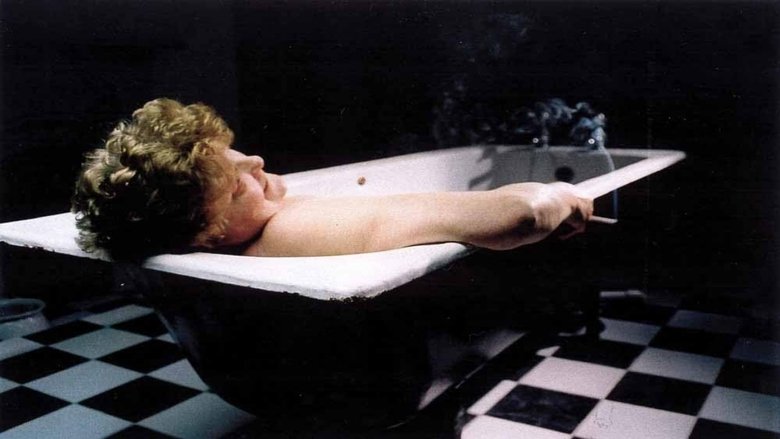

Undressing My Mother
Genres
Overview
The filmmaker's mother, Ethel Wardrop, talks about her own body and the role it played in her loving relationship with her dear husband.
Details
Budget
$0
Revenue
$0
Runtime
6 min
Release Date
2004-03-27
Status
Released
Original Language
English
Vote Count
8
Vote Average
5.8
Ethel Wardrop
Herself
6.0
Hedda Hopper's Hollywood No. 2
Hedda Hopper plays hostess at a party for her (grown) son William (DeWolfe Jr.). Hopper, attends the dedication of the Motion Picture Relief Fund's country home and goes to the Mocambo. There is also a sequence dedicated to the Milwaukee, Wisconsin world premiere of the first short in this series attended by more that a few film stars.
1941-12-05 | en
0.0
Under a Bridge
In this tape, Ko Nakajima and Video Earth Tokyo interview a homeless man. The subject is initially angry and frustrated, but gradually opens up and shares stories about his life. Under A Bridge was later broadcast on cable television.
1974-03-31 | ja
5.2
Arabian Coffee
'Coffea arábiga' was sponsored as a propaganda documentary to show how to sow coffee around Havana. In fact, Guillén Landrián made a film critical of Castro, exhibited but banned as soon as the coffee plan collapsed.
1968-01-01 | es
6.0
Inside Troublemaker Studios
A short featurette available on the DVD for Once Upon a Time in Mexico (2003), released in January 2004.
2004-01-20 | en
6.7
Knife Skills
Edwin’s Restaurant is determined to become one of America’s top French restaurants, with a staff unlike any other in the country. Brandon Edwin Chrostowski prepares to open his Cleveland, Ohio fine dining establishment with a staff composed nearly entirely of recently released prisoners in search of an opportunity to get their lives back on track. They sign up for a classical French food boot camp to learn the ins and outs of fine wine, sauces, and more.
2017-07-29 | en
4.0
China Strikes Back
In 1936 and 1937 Harry Dunham shot "several hundred feet of film," being the first cameraman to penetrate into the Shensi region and obtain footage of the Communist forces in China. He smuggled his film out and placed it in the hands of Frontier Films. Leyda, Lerner, Meyers and Maddow (they had to use pseudonyms) spent four months preparing the film for publication. In that time, the Chinese situation altered to such an extent that Frontier had to change the scenario several times in order to keep up with events...the producers had to make a happy change in the theme of China Strikes Back. It was no longer a film showing the Chinese people moving toward unity. It became a pictorial history revealing the how and why behind a realized unity.
1937-01-02 | en
7.9
I Needed Color
Jim Carrey exhibits his talent as a painter and reflects on the value and power of art.
2017-07-25 | en
1.0
Vanilla
Look around. Everything you see and touch can taste like vanilla.
2017-04-08 | pt
7.0
The Rink
This short, silent film captures a Sunday afternoon at a community skating rink. Iconic Quebec director Gilles Carle has the camera follow toddlers learning to skate, young girls flashing their skates and boys decked out in the colours of their favourite hockey teams. A picture perfect moment on a bright winter's day.
1963-05-25 | en
0.0
Howard Shore: A Composer's Dream
This short film demonstrates how Howard Shore has distinguished himself as one of Canada's most accomplished - and versatile - composers. During woodland rambles with his beloved dogs, Shore gives free rein to his ceaseless creativity. Whether composing delicate counterpoint or Oscar®-winning movie music, Shore is keenly tuned to a remarkable range of musical expression.
2011-05-13 | en
0.0
The Road to the West
When was Canada populated by Native Americans from the West? This film relates the discovery of the New World from the time of the Vikings, around 880, to Jacques Cartier.
1965-01-01 | fr
6.0
Trifles of Importance
Part of John Nesbitt's Passing Parade series, this short shows how three seemingly unimportant things can affect people. The first is how the number 7 affects a student accused of theft charges. The second segment shows that a person's doodles can reveal personality traits. The final segment shows why certain items are on men's suits, such as lapels.
1940-07-13 | en
4.0
Biosphere! Time to Apprehend
A journalistic story inspired by Volodymyr Vernadsky about the genesis of life in the universe — from the physical elements of the primordial broth to the civilization of intelligent man.
1974-01-01 | ru
0.0
Grindhouse All-Stars: Notes from the Sleaze-Cinema Underground
Insightful new documentary in which Jeff Lieberman, Roy Frumkes, Matt Cimber and Joe Ellison share memories of the slime and grime of the grindhouse glory days!
2017-07-24 | en
5.9
Ride Around the World
Journey across Morocco, Spain, Mexico, Argentina, Patagonia, Texas and British Columbia, to meet vaqueros, gauchos, baqueanos and cowboys - all part of a single global horse culture, an unbroken trail stretching back 1,500 years.
2006-05-26 | en
0.0
Tabaki
Bahman Kiarostami's charming documentary about mourners-for-hire who are called upon to attend funerals in Iran. With an understated, lighthearted style, Tabaki provides a fascinating view of a peculiar occupation within this religious culture, offering, in the process, an insightful portrait of the society as a whole.
2002-10-24 | en
7.4
Do Not Split
The story of the 2019 Hong Kong protests, told through a series of demonstrations by local protestors that escalate into conflict when highly armed police appear on the scene.
2020-01-24 | en
0.0
Guisado on Sunset
Missed connection regret at that one late-night spot—the kind you keep playing back in your head but not quite ever remembering right, until it starts to look like something else.
2019-08-04 | en
7.0
Betye Saar: Taking Care of Business
At age 93, there's no stopping the legendary artist Betye Saar.
2020-01-24 | en
0.0
Surfing
Short documentary on surfing.
1982-01-01 | nl